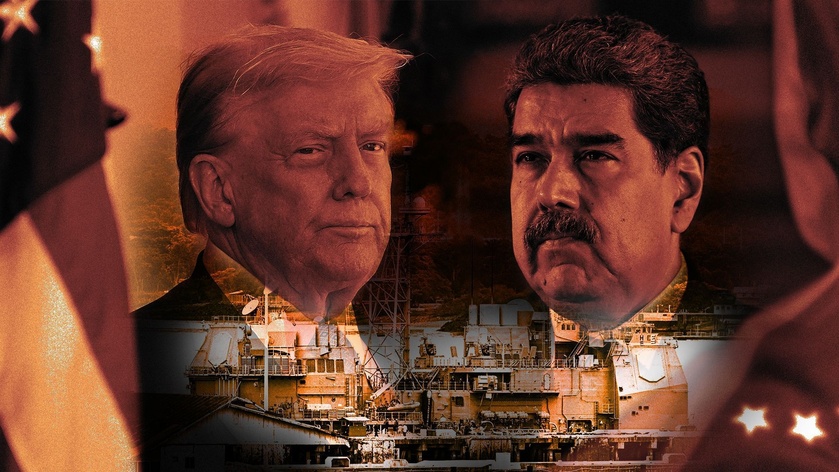On January 25, Russian Foreign Minister Sergey Lavrov told journalists in Angola that BRICS, an acronym for Brazil, Russia, India, China, and South Africa, may soon explore the possibility of creating its own currency. What message does this plan send regarding the greenback's dominance?
While delivering a statement after his meeting with Angolan President Joao Lourenco, Russian Foreign Minister Sergey Lavrov emphasized that the West had shattered vital principles of the inviolability of property, the presumption of innocence, fair competition, and globalization.
Under these circumstances, BRICS, an informal group of developing nations, and the CELAC (Community of Latin American and Caribbean States) have started to discuss the establishment of their own new currencies within the frameworks of these blocs, according to the Russian foreign minister.
Earlier this week, President of Brazil Luiz Inacio Lula da Silva touched upon the issue of the creation of a common currency for BRICS and the countries of Mercosur, a South American trade bloc, during his meeting with his Argentine counterpart Alberto Fernandez.
Lula da Silva specified that the countries could establish a type of currency for trade that the Central Bank sets. He added that he would prefer international trading transactions to always be settled in national currencies to reduce dependence on the US dollar.
Last week, the two presidents wrote an op-ed signaling their willingness to advance the discussions on a common South African currency that "could be used for both financial and commercial flows, reducing the costs of operations and [the continent's] external vulnerability."
Mikhail Khazin, a Russian economist, researcher, and publicist, has addressed seeming contradictions in Lula da Silva's statement. The Russian economist is inclined to believe that while BRICS and CELAC members are talking about a single currency system, they are likely to create a single payment system at the first stage.
"It now makes sense to create a payment system that combines the currency systems of the Eurasian, Chinese, Indian and Latin American zones," Khazin told Sputnik. "It is necessary to create a payment system independent of the dollar."
He expects that four new currency zones will be formed, comprising the Latin American, Eurasian, Chinese, and Indian regions. Only after that, in about 10 years, would it be logical to create a single currency, as a "superstructure," for all of them, akin to the euro, according to Khazin.....More Below
US President Donald Trump confirmed on Wednesday the upcoming start of ground strikes against drug cartel targets in Latin America.
He made the remarks during Christmas greetings to the military.
Trump said the United States was "now going after the land" in its fight against drug cartel targets, noting that drug trafficking by sea was down 96 percent.
The U.S. president also extended special congratulations to the crew of the aircraft carrier USS Gerald R. Ford, currently deployed in the Caribbean.

BEIJING (Sputnik) - China has begun operating the world's first intelligent ultra-large oil tanker powered by methanol, the China Central Television (CCTV) reported on Monday.
The tanker, designed to transport crude oil, was successfully put into operation in the city of Dalian in China's northeastern coastal province of Liaoning, the report said. State-owned company Dalian Shipbuilding Industry Co Ltd independently designed and built the vessel, it added.
The tanker is approximately 333 meters (1,092 feet) long and can carry around 2.1 million barrels of crude oil, the CCTV reported. Designed to produce low emissions and having intelligent control capabilities, the tanker will serve the route to the Middle East, among others, according to the report.
The vessel is powered by a dual-fuel methanol engine, which reduces carbon dioxide emissions by 92% compared to conventional fuel, the CCTV reported. It is equipped with an intelligent ship platform, an intelligent liquid cargo ...
A car bomb has killed a senior General Staff member, officials have confirmed
Source: The Investigative Committee
A Russian general has been killed in a car bomb blast in Moscow, the Investigative Committee has reported.
Officials identified the victim as Lt. Gen. Fanil Sarvarov, head of operational training at the General Staff. According to the statement, an explosive device had been planted beneath the vehicle he was traveling in, and detonated on Monday morning in the southern part of the Russian capital.
The blast also damaged several other vehicles and seriously injured Sarvarov’s driver, media reports stated.
Russian officials said one line of investigation is an assassination carried out by Ukrainian intelligence services, noting that Kiev has previously used explosive devices in targeted killings of officials and public figures.
Last December, a bomb hidden in an e-scooter killed Lt. Gen. Igor Kirillov, commander of Russia’s Nuclear, Chemical, and Biological Defense ...














